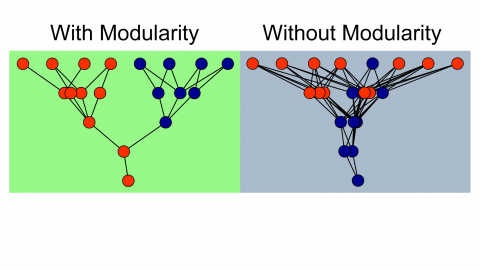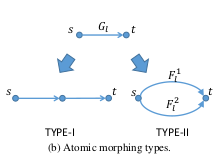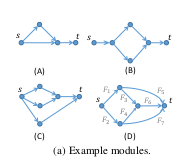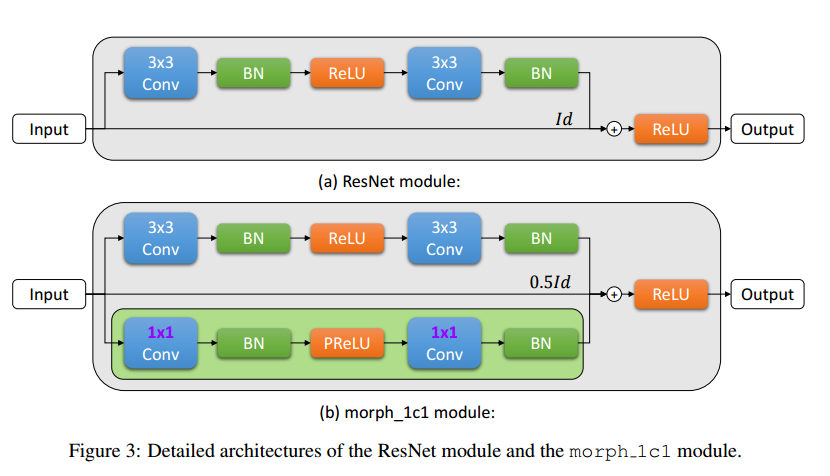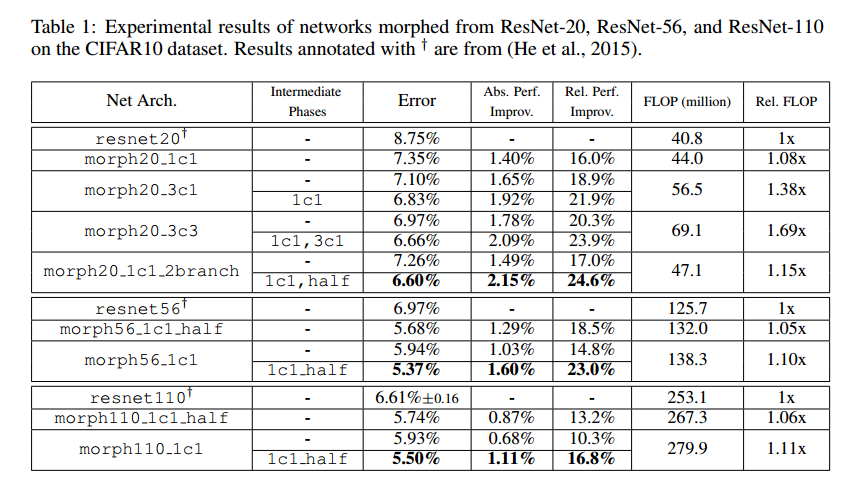About this Publication
- Authors: Tao Wei, Changhu Wang, Chang Wen Chen (Microsoft)
- Conference: ICLR
- Years: 2017
- Paper Link: https://arxiv.org/abs/1701.03281
Motivation
- inherite entire knowledge from a well-trained network to a new one
- booster performance
- explore new model and architecture for constitutional neural network
Previous works
- not practical use
- limits the change of network parameters including width, depth and kernel size
- allow to apply a limited layers in a CNN
Goal
- design the architecture allowing to apply hundreds of layers with primitive operations
What you would learn from this presentation
an idea of the architecture for knowledge inheritance in neural networks
some technical terminology about neural networks
Proposition - Network Morphism
explore a morphing space and apply changes of the basic modules to modularized networks
advantages
1. simple
2. scalability
[for beginners] What is CNN (Convolutional Neural Network)?
[for beginners] What is modularized network?
a network that is divided into a set of functional units (modules)
Goal of Network Morphism
When a CNN $B_i$ grows to a new CNN $B_j$, $B_i$ applies convolutional layers $G_i$.
To be specific, a convolutional layer $G_i$ is morphed into two convolutional layers $F_l$ and $F_{l+1}$.
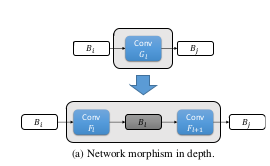
core algorithm
- create irreducible networks according to the types of morphable networks
- create a new convolution layers only if an irreducible network impacts to all fixed layers (if needed)
Types of Morphable Networks
-
Simple morphable networks
- morphed with atomic morphing operations
- TYPE-I: a convolutional layer is morphed into two convolutional layers
- TYPE-II: a convolutional layer is morphed into two-way convolutional layers
- morphed with atomic morphing operations
Quiz
Classify 4 networks into simple and complex morphable networks
Answer [1/2]
- Simple morphable network = (A) (B) (C)
- Complex morphable network = (D)
Answer [2/2]
How to solve Complex Morphable Networks
- create a irreducible network from a complex morphable network
- apply atomic morphing operations and create a new convolutional layer for the network
Implementation
The authors extend the proposed morphable algorithm in ResNet
[for beginners] ResNet
- a winner @ ILSVRC 2015
- Residual Learning
- conquer the proportional error rate to the number of convolutional layers
List of Evaluated Morphable Network
Dataset
-
CIFAR10
- consists of 32×32 color images in 10 categories, with 50,000 training images and 10,000 testing images.
-
CIFAR100
- consists of 500 training images in 100 categories and 100 testing images per category
-
ImageNet
- consists of 1.28 million training images in 1,000 object categories and 50K validation images
Experimental Results (CIFAR10)
Conclusion
Network morphism is an effective learning scheme to morph a well-trained neural network to a new one with the network function completely preserved
In benchmark, CNNs with the network morphism shows smaller error rate compared to CNNs by compromising the higher calculation cost
Discussions @ coffee with science meetup
Reference
https://adeshpande3.github.io/adeshpande3.github.io/A-Beginner%27s-Guide-To-Understanding-Convolutional-Neural-Networks/
http://cs231n.github.io/convolutional-networks/



